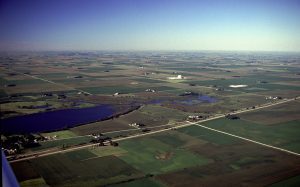
Clear Lakes Disguise Impaired Water Quality
New Minnesota Sea Grant study suggests that using water clarity as an indicator of water quality may not necessarily work in all regions.
Scroll down to view posts

New Minnesota Sea Grant study suggests that using water clarity as an indicator of water quality may not necessarily work in all regions.
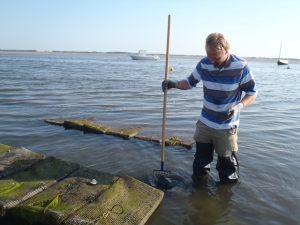
“We did this project specifically as a service to local municipalities to get them accurate data to utilize, if they’re going to go with the approach of seeding and growing shellfish as part of their water quality management plans.”

This guide features strategies for local governments, conservation principles and neighborhood site design, stormwater best management practices and local case studies.
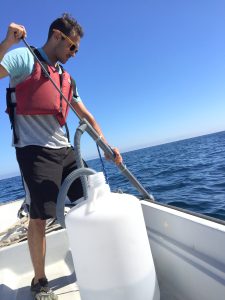
Charlotte Stevenson, Science Writer, USC Sea Grant It was hard for many West Coasters not to feel like they were part of an Armageddon-like movie
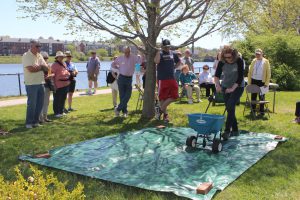
Some lawn care practices intended to get that lush green grass can affect nearby rivers and bays, but new research indicates that homeowners in the Northeast are willing to make changes to their lawn care routine to help protect the environment.
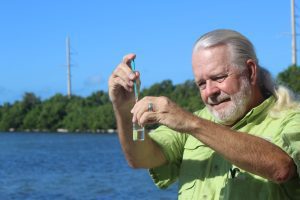
Two Florida Sea Grant agents are developing water quality monitoring projects in South Florida that enlist residents and volunteers on the front lines of citizen science.
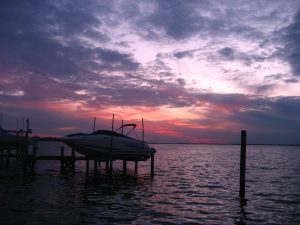
Recreational boating is a popular summertime activity in many states that can impact water quality. New Jersey Sea Grant Consortium works with boaters and marinas to minimize these impacts and assist businesses who wish to implement best management practices.

Vermont communities were devastated by flooding during extreme storm events. The state has prioritized the use of green stormwater infrastructure. Lake Champlain Sea Grant is working with partners to help communities become more flood resilient.
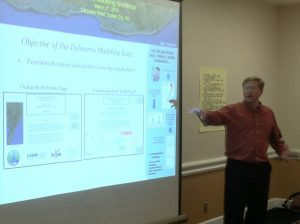
Maryland Sea Grant supported a research project to develop a Nutrient Loading Model for the Delmarva Peninsula. Other collaborators and funders on the effort included Sea Grant programs in Delaware and Virginia.

Maryland and other states in the Chesapeake Bay watershed are currently engaged in a multi-billion dollar effort to improve water quality by meeting Total Maximum Daily Load (TMDL) targets for nutrients and sediments. To accomplish this, municipalities around the region need help from trained and dedicated volunteers who can implement watershed restoration practices. Such practices include stormwater management tools like rain gardens and barrels.
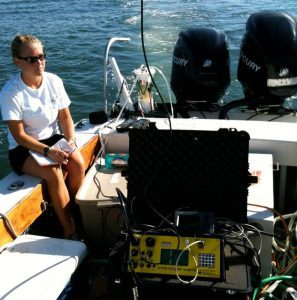
A large percentage of South Carolina’s economy is driven by the popularity of beaches as tourist destinations. Hypoxic (low-oxygen) conditions have been documented in the nearshore coastal waters of Long Bay, South Carolina, during summer months over the past several years. To maintain a healthy environment for recreation it is necessary to assess the impacts of land use on groundwater discharge to the area. Researchers measured radon activities of shallow beachface groundwater and nearshore bottom waters to estimate mixing rates and submarine groundwater discharge in Long Bay. They successfully developed a mixing model based on these measurements, which helped determine that natural phenomena such as limited mixing and submarine groundwater discharge (both previously overlooked) can significantly influence nearshore water quality and lead to hypoxic conditions. This model can be applied to other types of marine environments to help determine the causes of hypoxia, and as such could be a valuable tool in maintaining coastal water quality, especially in highly developed (urban) areas.
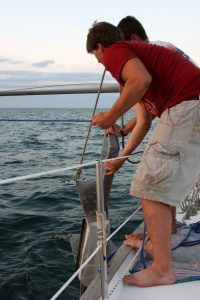
Microbeads have drawn a lot of public and political attention since 2012, when researchers from New York and Wisconsin discovered millions of the tiny particles in several Great Lakes. But this new study suggests microfibers may be an even larger concern in at least a few areas.
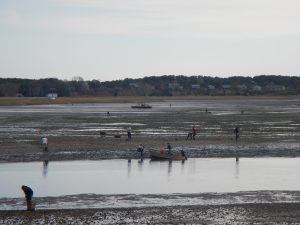
Woods Hole Sea Grant is evaluating how the growing and harvesting of shellfish can reduce nitrogen loading and improve water quality in Cape Cod coastal bays.
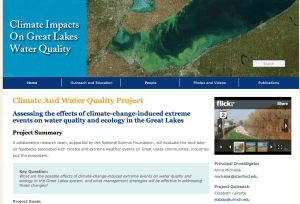
The Climate and Water Quality diagram is used for public outreach to show interaction of climate, water quality, land use and invasive species.
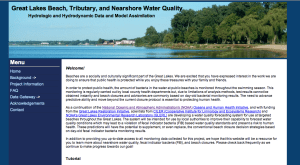
The Great Lakes Beach, Tributary, and Nearshore Water Quality: Hydrologic and Hydrodynamic Data and Model Assimilation website hosts a water quality forecasting system for use at targeted beaches throughout the Great Lakes.
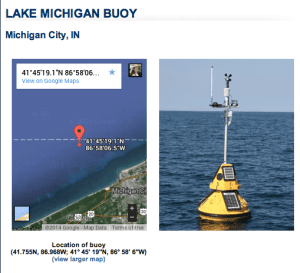
Illinois-Indiana Sea Grant maintains a buoy off the coast of Lake Michigan in Indiana and will soon be installing a second buoy in waters on the Illinois side. The buoys are equipped with sensitive scientific instruments that help scientists, managers, and local community members understand how the lake works, how things look today, and how things will look in the future.
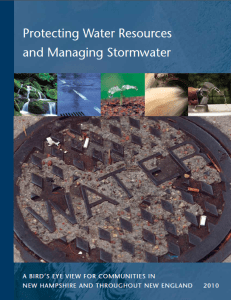
This is an outreach tool designed to guide communities through a range of strategies from landscape to plot level for water quality protection.

Pennsylvania Sea Grant helped students at Mercyhusrt University complete a year long social change campaign to educate their college community about the issues involved in pharmaceutical and personal care product use and disposal.
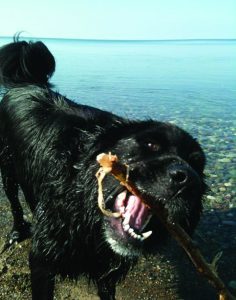
Harmful algal blooms or HABs are increasing in many areas and while people may be getting sick, dogs are actually dying. New York Sea Grant has put together informative brochures and fact sheets to help people understand how to keep their beloved pets safe.
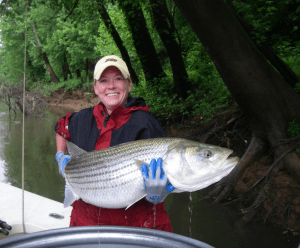
North Carolina Sea Grant develops varied techniques and technologies that address water quality issues. Research teams study the ability of restored wetlands to control runoff, test new sensor technology to monitor water quality in tidal marshes, and verify that fish ear bones, known as otoliths, can identify early-life habitats of fish.

With funding from Sea Grant and other agencies, Euan Reavie, Senior Research Associate with the University of Minnesota Duluth’s Natural Resource Research Institute, and his colleagues have been examining sediment cores to reveal the extent to which they have captured the story of Great Lakes water quality over the past several centuries.
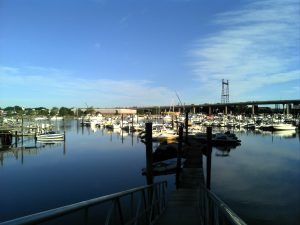
Mike Whitney, PhD and Penny Vlahos, PhD, Associate Professors of Marine Sciences at the University of Connecticut, are a physical and chemical oceanographer team that are funded by Connecticut Sea Grant to research the source perfluorinated compounds or PFCs in Long Island Sound.
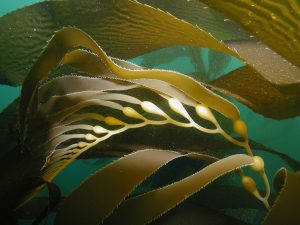
USC Sea Grant is helping to fund Kelp Watch 2014, a research initiative that uses fast growing kelp forest species as living dosimeters of the Fukushima released radioisotopes. Co-founder Dr. Manley hopes Kelp Watch 2014 will provide the public with immediate data as to whether there are any direct human health risks to the small amounts of radioactivity in the ocean.

A team of University of Wisconsin-Madison researchers have discovered key factors in predicting how and at what levels metals such as copper and cadmium harm Great Lakes shoreline environments and what protective measures coastal organisms adopt in response.
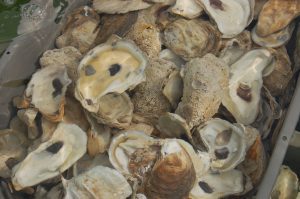
Researchers at the University of New Hampshire are studying two illness-causing species of bacteria found in oysters to obtain a more detailed understanding of microbial life on the half-shell. The ultimate goal is to minimize risks to human health without having to close shellfish beds for long periods of time.
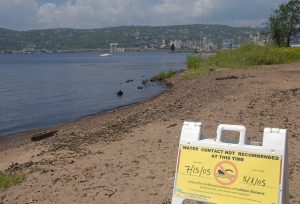
Backed by Minnesota Sea Grant’s commitment to research Dr. Michael Sadowsky and his colleagues have shown that Escherichia coli and enterococci, the bacteria responsible for "Water Contact Not Recommended" beach advisories, can often be traced back to waterfowl and other animals. Water sullied by waterfowl might be nasty, but it is not a serious human health concern.

Maryland Sea Grant researchers identify and map previously unrecorded Maryland streams. The additional detail is expected to inform conservation and development projects statewide.
With the support of The University of Southern California (USC) Sea Grant Program and the California Ocean Protection Council, Dr. Kelley has pioneered the use of a cutting-edge technology—proteomics—to see the “fingerprints” or impacts of endocrine-disrupting compounds in fish.